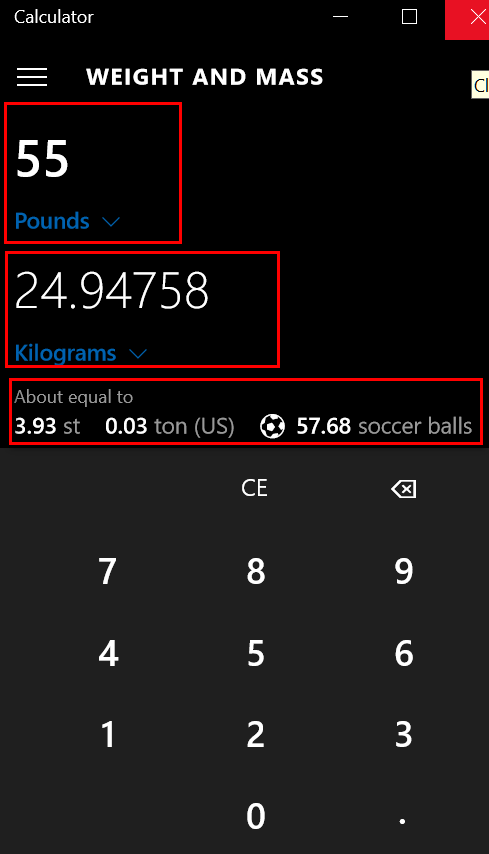

- CALCULATING MEGABITS PERSECOND HOW TO
- CALCULATING MEGABITS PERSECOND BLUETOOTH
- CALCULATING MEGABITS PERSECOND SERIES
- CALCULATING MEGABITS PERSECOND DOWNLOAD
CALCULATING MEGABITS PERSECOND DOWNLOAD
However, if somebody else in the house uses the internet while you're downloading this video file, it could take much longer to complete the download because of congestion in the data transfer.Īside from calculating the download time of a file from the internet, you can also use this calculator to determine the transfer duration from, let's say, a computer to an external storage device like a USB flash drive. Now, to calculate the download time, we have the to do the following computation:ĭownload time = 640 seconds = 10 minutes and 40 secondsĪs shown above, the 400 MB video file will finish downloading in less than 11 minutes over a stable 5 Mbps connection. With that said, we now have this computation:Ĥ00MB in bits = 400MB * (8 bits / 1 byte) * (1,000 bytes / 1 kilobyte) * (1,000 kilobytes / 1 megabyte)


To do so, we'll be using the conversion table above under the SI system. To calculate how long to download the 400 MB video over a 5 Mbps internet download speed, we can use the equation below:ĭownload time = file size / internet download speedīut first, let us convert the units of the file size in terms of megabits, which is equivalent to 1 million bits. Let us consider the example above for our sample computation. However, we have to be careful with the units we use, since this could be quite confusing. Calculating download time is as simple as dividing the size of the file you wish to transfer by the transfer speed of the network that the transfer will go through.
CALCULATING MEGABITS PERSECOND HOW TO
Now that we know how to determine the transfer speed for our uploads and downloads, we can now calculate a file's download time or duration. But, to determine the upload and download speeds of your connection, you can use any third-party speed test applications that can be accessed online through your browser. Since the file will also be coming through the much lower 5 Mbps connection, this will be the maximum transfer speed that we can get for this data transfer. For this example, let us assume that the upload and download speeds for both connections can use their entire bandwidths. On the other hand, you will be receiving the video file over your 5 Mbps home internet connection. Let's say that your friend wants to send you his new 400 MB (megabytes) video creation over his 10 Mbps (megabits per second) internet connection. To better understand this, let us consider an example. However, when moving a file from one computer to another, the maximum transfer speed will depend on the slowest bandwidth that the data has to go through - which can be anywhere in the route. Internet bandwidth can also represent the maximum speed an internet connection can have. Therefore, a file can be transferred much faster if the internet connection has a larger bandwidth.īandwidth is also, in a way, an internet connection's maximum capacity, and we can express it in units of bits per second. The larger the bandwidth is, the more data that can be transmitted at a time. We can compare a funnel's narrow tube part to what is called the internet's bandwidth. The flow rate of the water in this analogy is similar to the transfer rate of a file. However, if we place a funnel on one beaker, the amount of water flow will decrease due to the narrow part of the funnel. Pouring water from one beaker to another will only take a little amount of time. Think of it like pouring water into a beaker. Uploading and downloading data can take a while, depending on the file's size and transfer rate. Then, to access our file, people have to download it to their devices. All we need to do is upload our file to the internet. With the internet, we can now easily send any file to our loved ones, even if they are a thousand miles away from us, as long as they also have access to the internet.
CALCULATING MEGABITS PERSECOND SERIES
The internet is a series of computer networks running all across the world. We can now also upload or transfer data to the internet so that other people can access it.
CALCULATING MEGABITS PERSECOND BLUETOOTH
Nowadays, we can also transfer data wirelessly through radio frequencies like Bluetooth or Wi-Fi. The simplest way to transfer a file is through a data cable specifically made to transmit data. With that said, several ways have been developed for us to be able to transfer digital files from one device to another. When we take a picture using a digital camera, we need to have a way to transfer the picture file to a computer and then to a printer to end up with the image printed on a piece of paper. Files cannot always be in just one computer or machine.


 0 kommentar(er)
0 kommentar(er)
